Growing carnivorous plants indoors can be a fun and rewarding experience. Not only are they fascinating to watch as they catch their prey, but they also make for unique and intriguing houseplants. Carnivorous plants are fascinating and serve as natural pest control for your home. You can grow them indoors if you’re willing to put in a little effort and understand their unique care requirements.
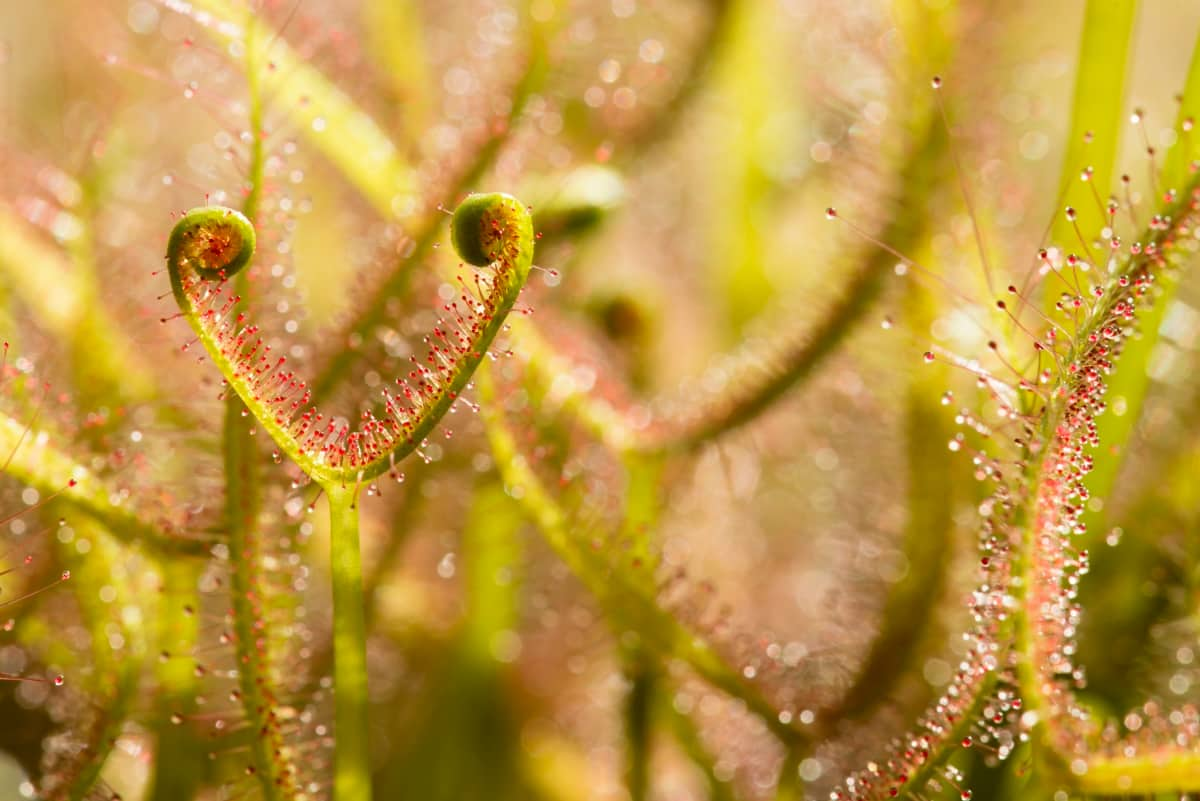
When growing carnivorous plants indoors, it’s important to remember that they have moist soil. Always use distilled water when watering your plants since tap water contains minerals that can harm them. Additionally, make sure they get enough sunlight or invest in artificial lighting. Following these tips on caring for carnivorous plants and choosing the right plant species for your indoor garden, you can successfully grow thriving specimens of these exotic beauties.
Top 12 Carnivorous Plants to Grow Indoors
Venus Flytrap
The Venus Flytrap is the most well-known carnivorous plant due to its unique appearance and fascinating ability to trap insects. When an insect lands on these leaves and triggers tiny hairs, the leaves snap shut within seconds. It’s important not to overwater them; they prefer moist soil but can be prone to root rot if sitting in standing water. They are living organisms that require proper care and respect, just like any other houseplant.
In case you missed it: Growing Best Bromeliads Indoors: DIY Steps Explained
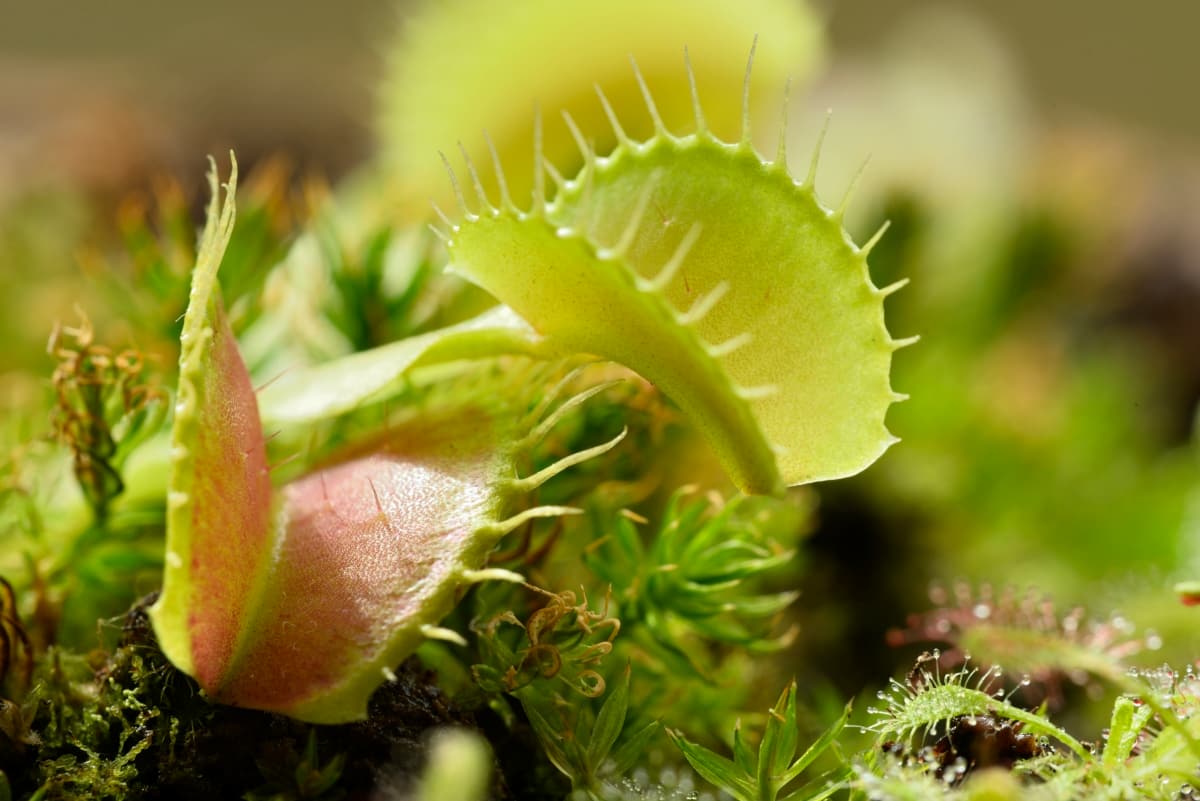
Australian Pitcher Plant
The Australian Pitcher Plant is a carnivorous plant known for its unique and beautiful appearance. The pitchers are shaped like narrow tubes with lids at the top, preventing rainwater from diluting digestive fluids. Once an insect falls into the pitcher, enzymes break down its body into useful nutrients for the plant’s growth. The Australian Pitcher Plant thrives in bright light but prefers cooler temperatures than other tropical plants. It also requires frequent watering during summer months and should be fertilized sparingly during growing seasons.
Purple Pitcher Plant
The Purple Pitcher Plant is a stunning and unique carnivorous plant that can make a great addition to any indoor garden. Once an insect lands on the slippery surface of the pitcher, it becomes trapped inside, where enzymes produced by the plant will eventually digest it. If you’re considering adding this beautiful plant to your collection, it’s important to remember that they require specific growing conditions to thrive. They prefer moist soil and high humidity levels, so provide them with plenty of water and mist their leaves regularly.
In case you missed it: Best Planter Materials to Use Indoors or Outdoors

Another key factor for success with the Purple Pitcher Plant is providing them with ample sunlight. These plants need at least 4-6 hours of direct sunlight daily to maintain their bright colors and avoid becoming leggy or weak. If you have experience growing indoor plants or are up for a new challenge, consider adding a Purple Pitcher Plant to your home collection. These fascinating plants can thrive indoors for years with proper care and attention.
Cape Sundew
Cape Sundew is a fascinating carnivorous plant that can excite your indoor garden. Its leaves are covered in small tentacles that secrete a sticky substance that traps insects. One of the unique features of Cape Sundew is its ability to move its leaves towards prey when they land on it. This movement ensures that plant enzymes fully trap and digest the insect.
In case you missed it: How to Grow and Care for Dieffenbachia (Dumb Cane) Plant Indoors: A Beginners Guide
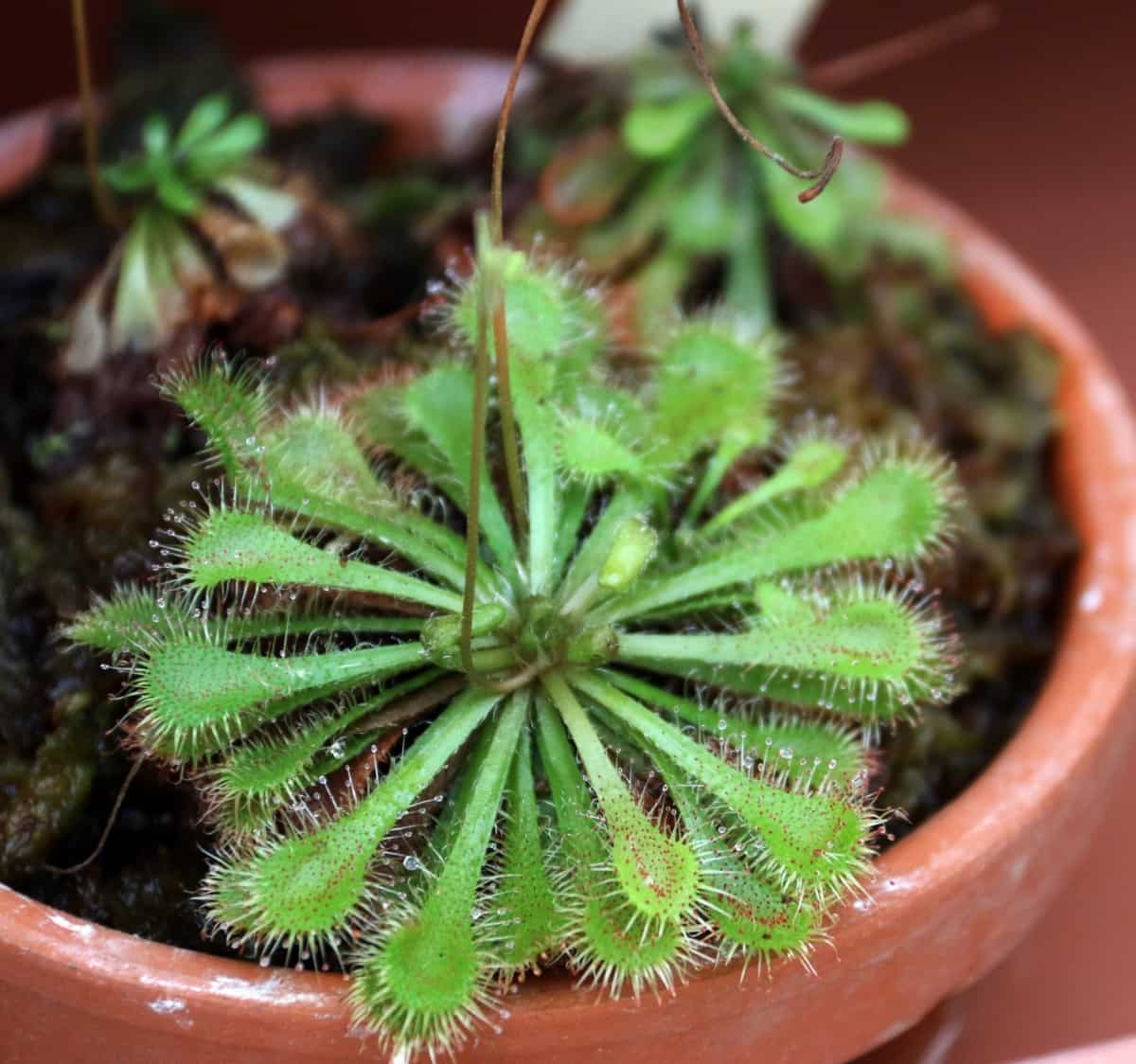
To grow Cape Sundew indoors, you need a pot and a soil mix made of peat moss, perlite, or sand. It needs bright light, so place it near an east or west window. Watering should be done using distilled or rainwater, as tap water contains minerals that could harm the sensitive roots. You also want to keep humidity levels around this plant by misting it regularly. If you’re looking for an interesting carnivorous houseplant that’s easy to grow indoors, Cape Sundew may just be what you need.
Butterwort
Butterwort is a unique carnivorous plant known for its beautiful and colorful leaves. Butterwort is an easy-to-grow indoor plant that can add beauty to any room. The most typical features of this plant are its sticky leaves. These leaves are covered in tiny glands that excrete a sticky fluid that traps insects as they land on them. Once trapped, the insect becomes stuck and suffocates from a lack of air. Another interesting feature of Butterworts is their ability to change color depending on sunlight exposure.
When exposed to bright light, their leaves turn reddish-purple or pinkish-red, while they tend towards green shades under lower lights. To grow Butterwort successfully indoors, you will need well-draining soil mixtures such as peat moss mixed with perlite or sand added in equal parts. You can also place your pot near windowsills where it receives good light but not direct sun rays. Butterwort makes an excellent addition for those who want a low-maintenance carnivorous houseplant option with striking colors and unique traits.
Monkey Cups
Monkey Cups are fascinating carnivorous plants that are easy to grow indoors. These unique plants have pitcher-shaped leaves that trap insects and other small organisms for food. One of the most interesting things about Monkey Cups is their ability to adapt to different environments. When growing these plants indoors, they prefer bright but indirect light.
In case you missed it: How to Grow and Care for Friendship Plants Indoors
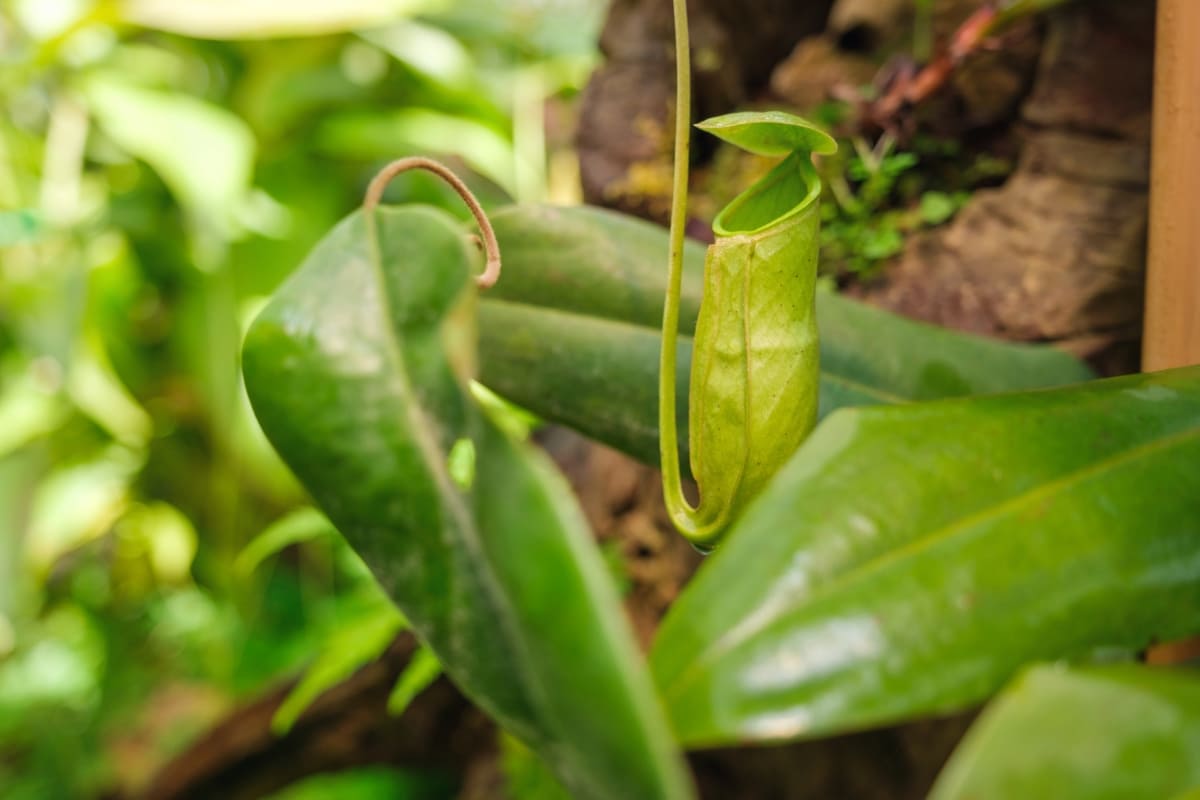
They also require high humidity levels, so placing them near a humidifier or misting them regularly is recommended. Regarding care, Monkey Cups need well-draining soil and should not allow drying between waterings. It’s important not to use tap water as the minerals can harm the plant; distilled or rainwater should be used. If you’re looking for an exotic and low-maintenance plant for your indoor garden, consider adding a Monkey Cup to your collection.
Bladderworts
Bladderworts are a unique and fascinating carnivorous plant that is relatively easy to grow indoors. These plants are known for their small, brightly colored flowers and ability to trap and digest small aquatic organisms. Some species even thrive in wetlands or bogs, making them great options for indoor gardeners looking to add some greenery to their homes.
To grow Bladderworts indoors, you’ll need to provide them with plenty of water and a nutrient-poor growing medium like sphagnum moss or sand. They also prefer bright light but can tolerate some shade as well. Try Bladderworts if you want an interesting addition to your indoor garden collection. These plants will impress you and your guests with their unique trapping mechanisms and colorful blooms.
Corkscrew Plant
Its distinctive appearance comes from its long, narrow leaves that curl tightly at the tips, resembling Corkscrews. The Corkscrew plant is easy to care for indoors, thriving in bright light and moist soil. It’s essential not to let the soil dry out completely between waterings aim for consistently damp but not waterlogged conditions.
In terms of feeding, this carnivorous plant attracts insects with sweet nectar on its leaves before trapping them within its Corkscrew trap structure. However, it can also be fed small amounts of live insects, such as fruit flies or ants, if you don’t have access to outdoor bugs. The Corkscrew plant is an eye-catching yet undemanding choice that adds wild beauty to any indoor space.
Dewy Pine
If you’re looking for a carnivorous plant that is easy to care for and visually stunning, look no further than the Dewy Pine. This small but mighty plant is perfect for indoor growing and has the bonus of being relatively low maintenance. The Dewy Pine gets its name from the tiny dew droplets on its leaves, giving it a unique and eye-catching appearance. These dewdrops are digestive enzymes that help the plant break down its prey.
In nature, Dewy Pines grow in boggy areas with poor soil conditions. To replicate these conditions at home, use a potting mix for carnivorous plants or create your mixture using peat moss and sand. In their natural habitat, these plants get most of their water from rain or nearby bodies, requiring constantly moist soil.
Cobra Plant
Its distinctive appearance resembles a cobra snake with its forked tongue-like leaves and hooded head. The Cobra Plant secretes sweet nectar from its modified leaves, attracting insects like bees and flies towards it. Once they enter the hood-shaped structure, they become disoriented by the translucent panels on top, which prevent them from escaping. Unlike other carnivorous plants, Cobra Plants don’t require high humidity levels or standing water to survive indoors. It’s important to note that these plants are not for beginners due to their specific growing requirements, such as acidic soil mixtures and distilled water for watering purposes only.
Rainbow Plant
If you are looking for a carnivorous plant that adds color to your indoor garden, then the Rainbow Plant is an excellent choice. This unique and fascinating plant gets its name from the beautiful pink, purple, and red hues displayed on its leaves. It’s easy to grow indoors as long as you provide plenty of light, humidity, and water. The perfect place for this plant is near a bright window or under artificial lights.
Another fact that makes this plant stand out from other carnivorous plants is that it doesn’t rely entirely on insects for nutrients. Instead, it absorbs minerals from the soil through its roots like any other regular plant. To keep your Rainbow Plant healthy and thriving, use only distilled water or rainwater when watering it because tap water contains minerals that may harm the delicate leaves. Also, avoid using fertilizers since they can also harm these plants.
Waterwheel Plant
This carnivorous plant is known for its circular leaves that resemble miniature water wheels, hence its name. The Waterwheel Plant is relatively low-maintenance and easy to grow indoors. It requires moist soil and high humidity levels, so keep it well-watered. When caring for your Waterwheel Plant is that it needs plenty of light. However, direct sunlight can scorch its delicate leaves, so place it near a bright window.
Like all carnivorous plants, the Waterwheel Plant feeds on insects by trapping them in sticky digestive fluid. While this may sound gruesome, watching your plant catch prey can be fascinating and even satisfying. Adding a Waterwheel Plant to your indoor garden can provide an interesting conversation piece and an effective pest control solution.
Conclusion
Growing carnivorous plants indoors can be a fun and rewarding experience. These unique plants not only serve as great conversation starters but also assist in controlling pests without the use of harmful chemicals. Many carnivorous plants can be easily grown indoors. These plants add beauty to your home and help control pests naturally without using harmful chemicals.
In case you missed it: 12 Cold-tolerant Indoor Plants For Winter Weather
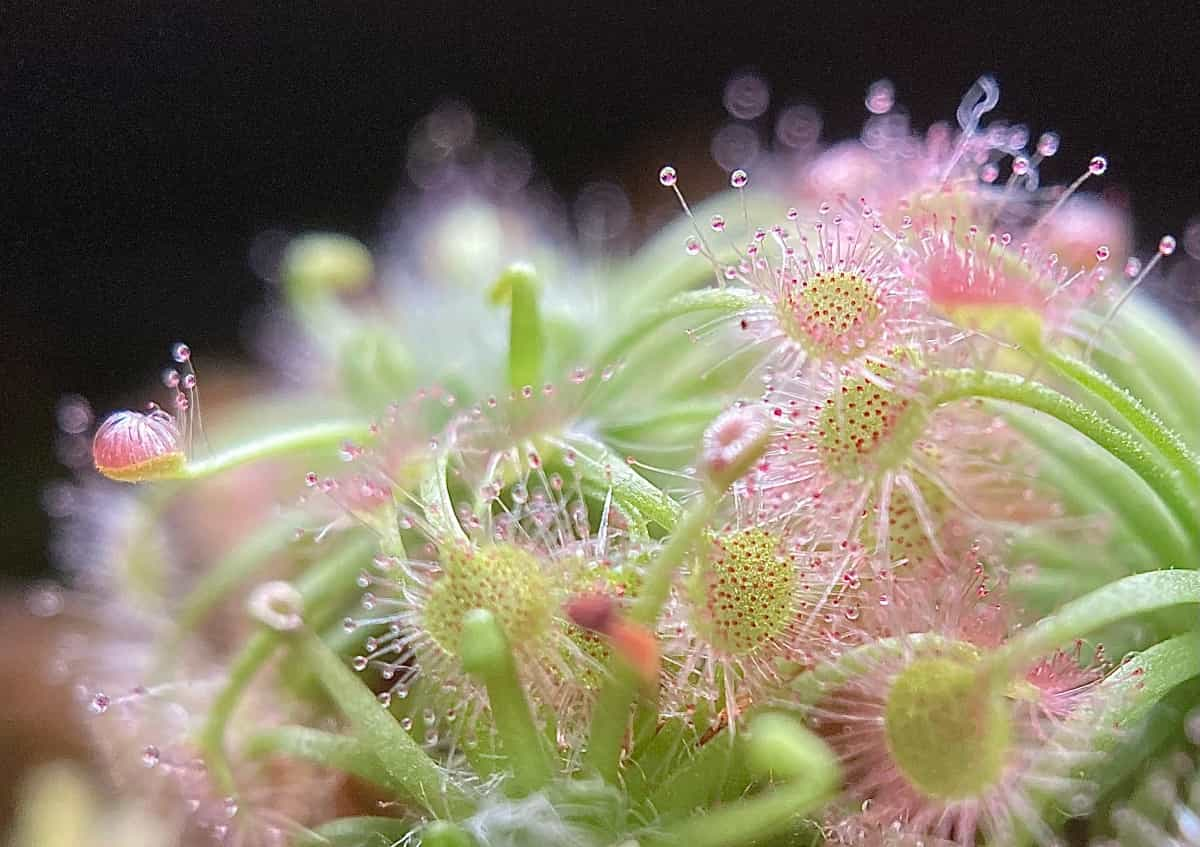
Carnivorous plants are fascinating and unique additions to any indoor garden. When growing these plants indoors, it’s important to remember their specific needs for light, water, and soil. Always research the particular species you want to grow before getting started. If you’re looking for an exciting new addition to your indoor garden collection or need a natural solution for controlling pests in your home, consider adding one of these amazing carnivorous plants. With their unique appearance and low-maintenance care requirements, they’ll provide years of enjoyment while keeping your space free from unwanted insects.
- How to Grow Hibiscus from Flower
- Plantation Ideas for Home Decoration: A Beginners Guide
- Flower Garden Designs and Layouts for Beginners
- Planting and Spacing Techniques in Papaya: A Beginner’s Guide
- Growing Gold: Essential Techniques for Planting Pineapples
- How to Make Kalanchoe Plant Bushy: Home Remedies and Solutions
- 11 Reasons Why Your Gardenia is Not Blooming: Home Remedies and Solutions
- Eco Elegance: The Guide to Designing a Drought-Tolerant Landscape
- Gardening on a Slope: Strategies for Hillside Landscaping
- Nourish and Flourish: Top Organic Mulches for Thriving House Plants
- Everything You Want to Know about Indian Mogra Flower: Discover Uses and Growing
- Green Thumb Success: Expert Tips for Cultivating Greenhouse Pumpkins All Year Round
- Maximize Growth & Flavor: The Ultimate Guide to Companion Planting in Herb Gardens
- How to Control Rhododendron Problems Naturally: Home Remedies and Organic Ways to Fix Them
- Natural Magic: The Remarkable Benefits of Cinnamon for Plants
- Best Steps to Revive Dying Tulip with Natural and Organic Treatment
- 10 Reasons Why Your Angel Trumpet is Not Blooming: Remedies and Treatment
- How to Fix Periwinkle Leaf and Flower-Related Problems: Natural Remedies and Solutions
- How to Fix Zinnias Leaf and Flower Problems: Discover Natural and Home Remedies
- Organic Steps to Induce Lemon Tree Flowers: A Comprehensive Guide
- Bloom Booster: Crafting the Perfect Homemade Bougainvillea Fertilizer
- Optimizing Growth: A Guide to Applying NPK Fertilizer for Potted Plants
- 10 Best Homemade Fertilizers for Rubber Plant: DIY Recipes and Application Method
- How to Boost Female Pumpkin Flowers: Effective Steps for More Flowers and High Yields
- Transform Your Indoor Garden: Top Benefits of Pink Salt for Houseplants
- 10 Best Homemade Fertilizers for Peacock Plants (Calathea): Easy DIY Guide
- Unlock Blooms: 9 Reasons Why Your Potted Chrysanthemum is Not Blooming
- 8 Reasons Why Your Potted Hibiscus is Not Blooming: Fix it with Simple Solutions
- Unlock Blooms: 9 Key Reasons Your Potted Frangipani Won’t Flower
- 10 Reasons Why Is My Ice Plant Not Blooming: Remedies and Treatment
- 10 Reasons Why My Potted Hydrangea Not Blooming: Treatment and Remedies
- 10 Reasons Why is My Wisteria Not Blooming: Remedies and Treatment
- 10 Reasons Why is My Goldfish Plant Not Blooming: Remedies and Treatment
- Maximize Your Space: Ultimate Guide to Balcony Gardening with Grow Bags
- 10 Reasons Why Your Iris is Not Blooming: Remedies and Treatment
- 10 Reasons Why Your Anthurium Plant is Not Blooming: Treatment and Remedies